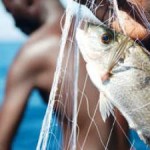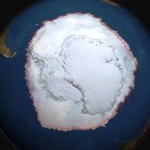
Bangkok – The unique freshwater challenge facing many small islands in the Pacific is spotlighted in a new report released by the United Nations Environment Programme (UNEP) on April 23.
The report, “Freshwater under Threat – Pacific Islands”, found that the almost total reliance on rain-fed agriculture across all islands puts economies and livelihoods at risk. Nearly 10% of deaths of children under five in the region is attributable to water related causes; 90% of these deaths, according to the report, can be traced to poor sanitation treatment systems.
The delivery of water supplies and sanitation services in many Pacific countries currently falls well short of Millennium Development Goal (MDG) targets. According to the report, access to improved drinking water sources in Fiji and Papua New Guinea (at 40% and 47%, respectively) is about half the global average and it is anticipated that both countries will fall significantly short of the Millennium Development Goal (MDG) for improved drinking water access.
Ecologically, smaller islands are under greatest stress, with 85% to 90% of vegetation cleared on Majuro Atoll, Nauru, Fongafale and Upolu, the report says. These islands also have the smallest capacity to absorb wastewater generated from urban areas, polluting critical groundwater lenses.
“The challenges facing the region in terms of freshwater resources are immense. Many of these islands have limited water resources, not to mention human, financial and management resources. It is imperative that we improve water use efficiency to meet the basic human needs and to support sustainable development,”” said Dr. Park Young-Woo, Regional Director of UNEP Regional Office for Asia and the Pacific.
The report cited water management as one of the greatest challenges to water resource vulnerability, particularly the limited technical and governance capacity partly due to the high emigration of its skilled and educated workers. All Pacific Islands are struggling with Integrated Water Resources Management (IWRM) capacity, according to the report, with only Samoa and Nauru having IWRM policies.
“This brain-drain hinders development in this region with many countries struggling to fill technical positions,”” said David Duncan, the report’s author and Regional Environmental Engineer at the Secretariat of the Pacific Communities’ (SPC) Water and Sanitation Programme, “Water resource management is a critical issue in this region where many islands are isolated and have limited local resources.”
These challenges – which are likely to be aggravated by climate change – will require innovative approaches and tailoring solutions that take into account the complex geographical and socioeconomic constraints of each island .There is no one solution and would need a mix of policy intervention and preferred management measures.
The report also recommends:
- Long-term strategies to address sustainable management capacity in the region. Further, this must be supported by high-level engagement to ensure political commitment to developing and implementing sustainable policies and legislation.
- Delivery of Integrated Water Resources Management (IWRM) within a model adapted to the Pacific is critical to enable countries to maximize development opportunities associated with water resources and better meet basic human rights. This will require varying degrees of institutional and utility reform to optimize governance and management arrangements.
- Investment in infrastructure with a combination of household level and centralized infrastructure on larger islands.
- Integration of Disaster Risk Management into national planning and integration of water resource management needs to be integrated into disaster risk management to provide Pacific Island Countries (PICs) with resilience that reduces the costs, which are as high as 46% of GDP.
- Ensure that communities are an integral component in planning and delivery of disaster management plans
- National and regional feedback on progress towards addressing major water resource issues and develop indicator frameworks are required at national and regional levels to provide critical feedback to decision-makers on the success (or otherwise) of policy decisions and implementation.
Notes:
- The 14 Pacific Island Countries (PICs) are home to over 9 million people, the majority of whom live in rural areas. These countries have about 1,000 islands covering a land area of just over 500 thousand square kilometres, spread across 180 million square kilometres of ocean, more than one third of the earth surface.
- Throughout the Pacific, water resources are typically managed on an island-by-island basis, as inter-island transfers across hundreds of kilometres of ocean are generally impractical and cost-prohibitive.
- The greatest vulnerability is reflected in the lack of water resources in low-lying islands. Six island countries – Nauru, Niue, Kiribati, Tonga, Tuvalu and the Republic of the Marshall Islands – have no significant surface water resources, and of these, only Tonga and Niue have significant groundwater resources. At the other extreme, the intense rainfall and runoff experienced in several large volcanic islands causes flooding on the coastal plains. The annual rainfall variability of many islands (as high as 54% in Nauru) means that rain cannot be relied upon to meet water demands. For populations on islands with no surface water or significant groundwater resources, this variability of the sole natural source represents a significant threat to island sustainability.
- The development challenges within the larger volcanic islands of Viti Levu and New Guinea are largely related to meeting basic human rights for access to improved water supply. The predominantly rural populations across these large rugged islands are clearly stretching the capacity to deliver safe drinking water supplies, with access to improved drinking water sources in Fiji and Papua New Guinea at 40% and 47%, respectively (about half the global average of 87%) and almost no change since 1990. Significant investment in these areas has seen a considerable increase in the number of people with access to drinking water; however, population growth has matched this over the same period.
- Small atoll and raised coral islands typically make maximum use of the limited resources available. The extreme stress on water resources means that resources outside the traditional surface water and groundwater resources have been developed, including a high dependence on rainwater harvesting and desalination. The small populations and targeted investment strategies have enabled these islands to achieve relatively high levels of access to drinking water supply, with most of these countries on track to meet the relevant MDG targets.
Source: UNEP.












